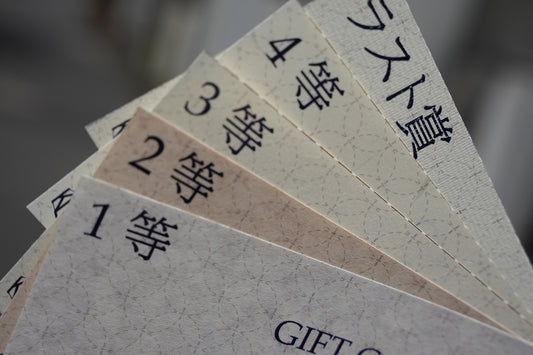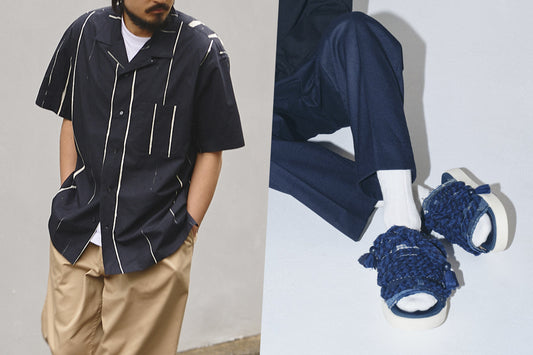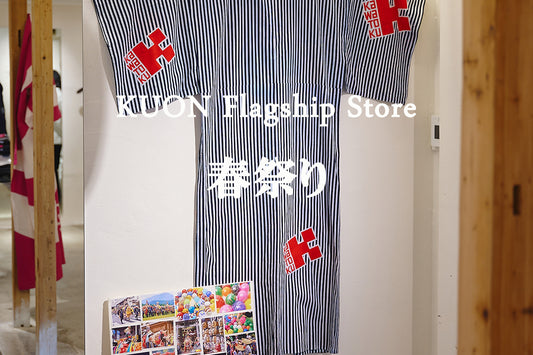Hi, this is Shohei.
Kumihimo has appeared in the Fall/Winter 2023Collection and the Spring/Summer 2024 Collection two seasons in a row. What is the difference from ordinary cords? I have looked into it and found it to be profound. I will write about Kumihimo, braided cords.
Three types of "cords"
Did you know that there are three types of cords in general?
Twisted cords, woven cords, and braided cords. I will explain more about braided cords in detail later, so let me briefly introduce twisted cords and woven cords.
Twisted cords
Twisted cord is, literally a cord made by twisting. Because of its primitive construction, it is considered to be the oldest type of cordage. Because of its low elasticity and high strength, it is often used as a rope.
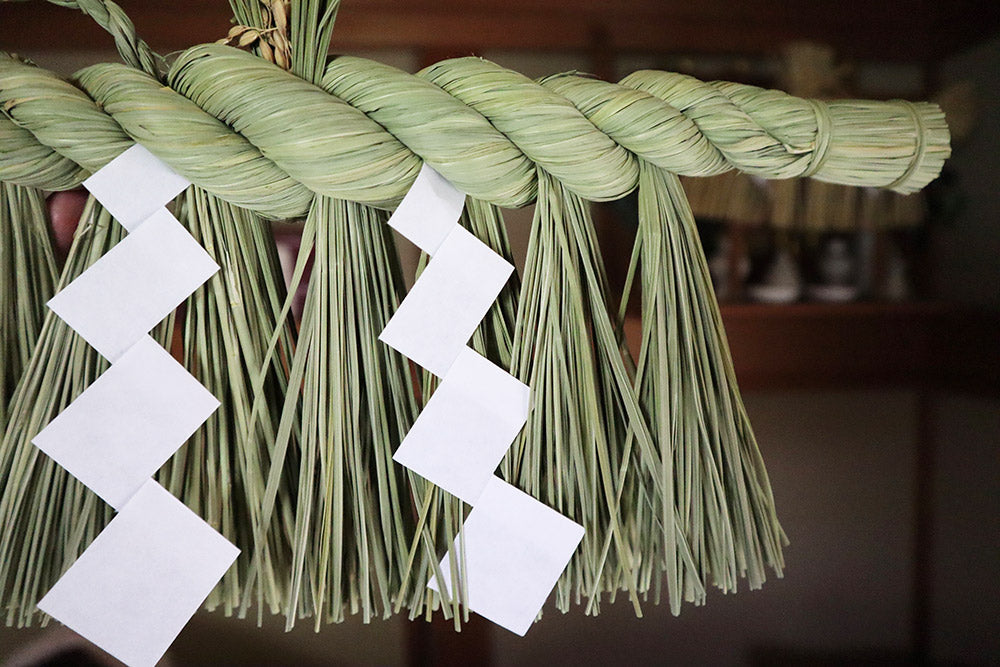
In Japan, you may have seen it in shimenawa (sacred straw rope seen in shrines), kesho-mawashi (Embellished aprons worn by Sumo wrestlers), and tug-of-war ropes.
Woven cords
Woven cords, as the name implies, is a cord woven with warp and weft yarns. Sanada-himo," known as the narrowest woven fabric in the world, is one of the most famous.

It is also characterized by low elasticity and was used to tie wooden boxes for tea utensils, and to fasten swords and armors. It has a unique woven pattern, like a family crest, which could be used to identify who owned it.
Kumihimo
A cord made by braiding three or more silk or cotton threads. It is classified as "braided fabric" a type of fabric production technique such as knitting and weaving. Unlike the two mentioned earlier, it is characterized by its high elasticity.
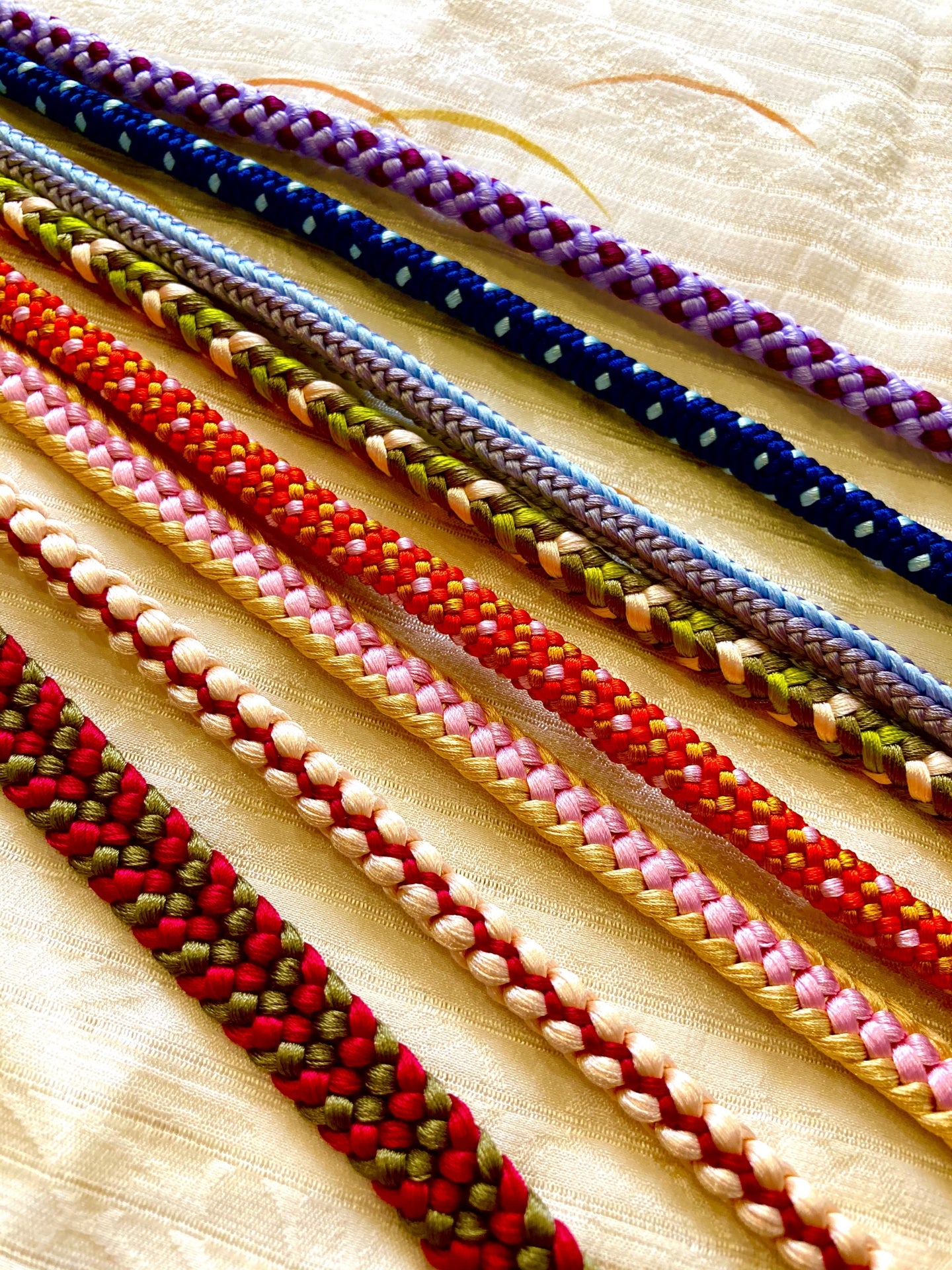
While hand braided cords are highly regarded as a craft, machine braided cords and braiding methods are applied to many advanced technologies. They have been introduced into various products such as medical devices and industrial products, supporting our daily lives. You may be in the care of "Kumihimo" without even knowing it.
Types of Kumihimo
Kumihimo are broadly classified into three types: square braided "Kaku-uchi-himo", flat braided "Hira-uchi-himo" like ribbons, and round braided "Maru-uchi-himo". Within these three types, they are further subdivided according to the number of threads.
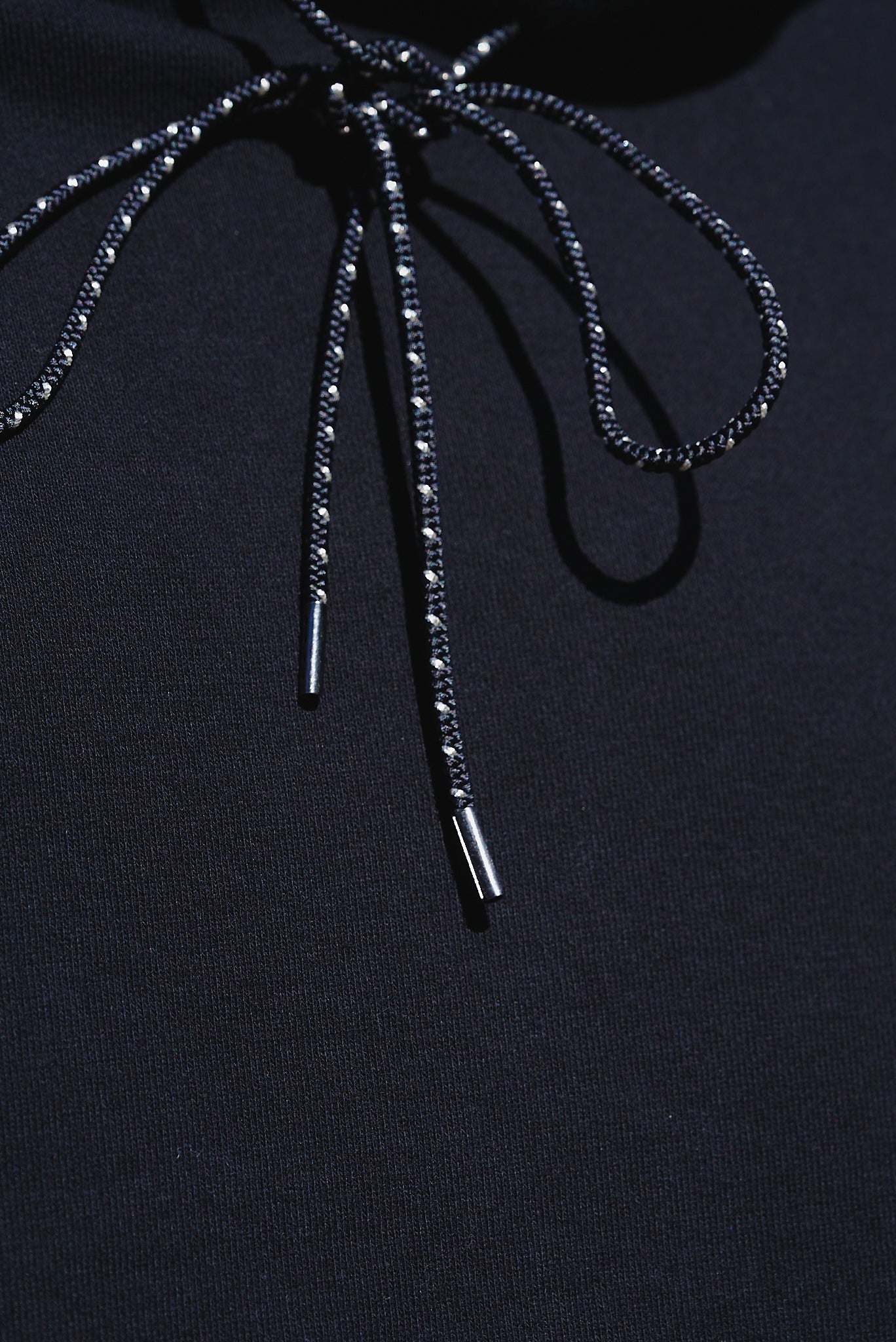
The photo above shows this season's Kumihimo Hoodie in black, features a "maru-uchi-himo" braided with black and shiny silver threads. By combining different yarns, regular patterns are created on the cord, which can be enjoyed as a design accent. By the way, the shiny silver threads are difficult to handle, so it is said to be a hard task to braid them.
Kumihimo, which plays a role in accenting the simplicity of the hoodie, is a traditional Japanese craft with a long history, having taken root in Japan as far back as the Nara period (710-794), some 1,300 years ago.
Functional and decorative roles
It seems to have existed in the Jomon period, as fragments of five-thread Kumihimo made of plants were excavated from the Sannai-Maruyama site in Aomori Prefecture. And since Kumihimo are housed in Shosoin and Horyuji temple, it seems that Kumihimo took root in people's daily lives about 1,400 years ago in the Nara period. In the Heian period (794-1185), it was used for a part of formal wear by aristocrats and used as decoration.
Later, during the age of samurai, it was used as a grip for the Japanese sword and as a cord to tie the sword to the Obi, waist belt. In addition to its practicality, it also served to make the sword look beautiful. Therefore, the popularity of Kumihimo, which combines "functionality and beauty" increased.
In modern times, Kumihimo has been used as obi-jime (reinforcement and accessory for Obi, waist belt) for kimonos, taking advantage of the characteristics of "easy to tie and hard to loosen, but easy to untie".
As mentioned earlier, Kumihimo is still valued today as a unique traditional craft that combines "functionality" and "aesthetic", and are applied to a variety of advanced technologies.

For KUON's Kumihimo Hoodie, Kumihimo also combines "beauty" as a "Iki (chic)" decoration with "function" to keep the hood sit well.
Played an important role in a film
One last point, in the animated film "Your Name." which I have watched more than three times has a Kumihimo as an important item.

"Your Name." is a story about a boy in Tokyo who lives in the present and a girl in the countryside who lives in the time line of three years ago, and thier body switch.
I couldn't catch up with the switching back and forth between now and 3 years ago, and it took me more than 3 viewings to finally understand the content...The story was interesting, of course, and there were scenes that gave me a sense of Japanese tradition. Importantly, most people can usually understand it in one viewing. LOL!
Here is a quote from the movie about Kumihimo.
"Musubi" is the old way of calling the local guardian god. This word has profound meaning. Typing thread is "Musubi". Connecting people is "Musubi". The flow of time is "Musubi". These are all the god's power. So the braided cords that we make are the god's art and represent the flow of time itself. They converge and take shape. They twist, tangle, sometimes unravel, break, and then connect again. "Musubi" - knotting. That's "time".
This can be too "Japanese" to understand, but I like the idea because I can find similarites to "Mitate" aesthetic. Kumihimo ties physical objects together, but it also ties invisible things together, flowing time, love, and tradition.
We hope this Kumihimo Hoodie ties KUON with you, and you with someone else.
Thank you!


![[Kumihimo] Pursueing both functionality and beauty](http://kuon.tokyo/cdn/shop/articles/240124_kuon_store_31709.jpg?v=1707628469&width=1100)

